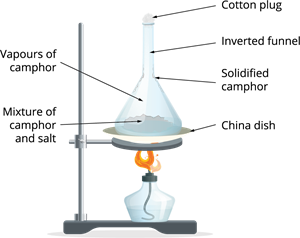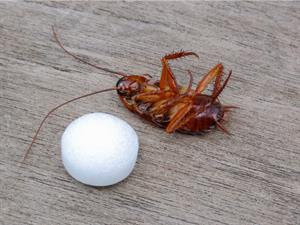
PUMPA - SMART LEARNING
எங்கள் ஆசிரியர்களுடன் 1-ஆன்-1 ஆலோசனை நேரத்தைப் பெறுங்கள். டாப்பர் ஆவதற்கு நாங்கள் பயிற்சி அளிப்போம்
Book Free DemoCertain solid substances, such as camphor, iodine, ammonium chloride, naphthalene, menthol, and dry ice (a solid form of carbon dioxide), change to gas without becoming liquid when heated.
This change in the state during the sublimation process is due to the change in temperature of the substances.

Camphor on burning
Sublimation occurs when heated, and hence it is called an endothermic process. The process where solid directly changes into vapour on heating is known as sublimation.
This is a physical change as no new substance is formed. And, the vapours formed, when collected and cooled, will be back to their original state without any change in their chemical properties.
Let us see how we can separate a salt mix with camphor:Example:
Step 2: The end of the inverted funnel is covered with cotton.
Step 3: Then, the china dish is heated.

Sublimation process
Observation: When heated, camphor transforms from a solid to a gaseous state leaving behind the salt, which is the non-volatile substance.
Result: The sublimation method is used to isolate certain mixtures that contain a sublimable volatile component from a non-sublimable impurity.
Sublimation process in our daily life:
We have seen in toilets; air fresheners are employed. Over some time, the solid air fresheners slowly dissolve and produce a pleasant odour in the bathrooms.

Mothball
Naphthalene mothballs are used to keep moths and other insects away. These, too, sublime over time.
Camphor is commonly found in Indian homes. It has an enchanting odour and is occasionally used as a refresher.